What's New
Displaying results 2761 - 2770 of 4052
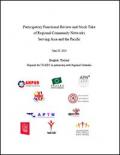
Resource | Reviews and Snapshots,
The Participatory Functional Review and Stock Take of Regional Networks Serving the Asia and the Pacific Region aims to understand the strategic contribution of 10 regional networks (selected by UNAIDS) over the past five years, further develop their institutional arrangements and capacities to deliver on their mandates, and strengthen their relevance and effectiveness especially their value-added to national stakeholders, donors, and the general public. As such the review provides the regional networks with an opportunity to take stock and determine how to better position themselves over the next 3 to 5 years in response to the changing landscape of HIV in the region and globally.
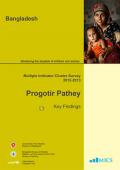
Resource | Publications,
The Bangladesh Multiple Indicator Cluster Survey (MICS) Progotir Pathey was carried out in 2012-2013 by Bangladesh Bureau of Statistics in collaboration with The United Nations Children's Fund (UNICEF), as part of the global MICS programme. Technical and financial support was provided by the United Nations Children’s Fund (UNICEF).
The global MICS programme was developed by UNICEF in the 1990s as an international household survey programme to collect internationally comparable data on a wide range of indicators on the situation of children and women. MICS surveys measure key indicators that allow countries to generate data for use in policies and programmes, and to monitor progress towards the Millennium Development Goals (MDGs) and other internationally agreed upon commitments.
The objective of this report is to facilitate the timely dissemination and use of results from the Progotir Pathey MICS prior to the release of full tables and the final report that will contain detailed information on all survey findings by various demographic, social, economic and cultural characteristics.
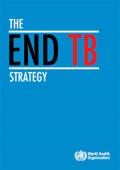
Resource | Publications,
The vision for the post-2015 global tuberculosis strategy is "a world free of tuberculosis", also expressed as "zero deaths, disease and suffering due to tuberculosis". The goal is to end the global tuberculosis epidemic.
The Millennium Development Goal target "to halt and begin to reverse the incidence of tuberculosis by 2015" has already been achieved. The related Stop TB Partnership targets of reducing tuberculosis prevalence and death rates by 50% relative to 1990 are on track to be achieved by 2015. Under this strategy, new, ambitious yet feasible global targets are proposed for 2035. These include achieving a 95% decline in deaths due to tuberculosis compared with 2015, and reaching an equivalent 90% reduction in tuberculosis incidence rate from a projected 110 cases/100 000 in 2015 to 10 cases/100 000 or less by 2035. These targets are equivalent to the current levels in some lowincidence countries of North America, western Europe and the Western Pacific. An additional target proposed to ascertain progress of universal health coverage and social protection is that by 2020, no tuberculosis-affected person or family should face catastrophic costs due to tuberculosis care.
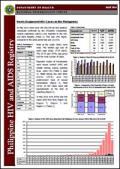
Resource | Fact Sheets,
In May 2014, there were 495 new HIV Ab sero-positive individuals confirmed by the STD/AIDS Cooperative Central Laboratory (SACCL) and reported to the HIV and AIDS Registry (Table 1). This was 19% higher compared to the same period last year (n=415).
Most of the cases (96%) were male. The median age was 28 years (age range: 17-69 years). The 20-29 year (57%) age group had the most number of cases.
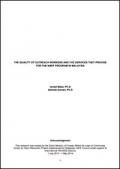
Resource | Publications,
Outreach workers have been the focal point for the success and failure of the Needle Syringe Exchange Program (NSEP program) in Malaysia. They are the back bone and considered the front line workers for the NSEP program in Malaysia. They are instrumental in providing all of the services that have been stipulated under the NSEP program and the rightly so individuals to deal with people who inject drugs (PWID) in the community. Outreach workers often face many daily challenges when they work with PWID. Additionally, they also have to face stakeholders who completely reject or give very little support to the NSEP in Malaysia.
The general aim of this study is to examine factors that can influence the quality of services provided by the outreach workers to the PWID through the NSEP program.
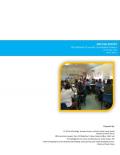
Resource | Publications,
A five-day consultation meeting on STI and HIV with the national stakeholders in Nauru was conducted by the Ministry of Health of Nauru, together with the World Health Organization (WHO) Office of the Representative in the South Pacific and the Division of the Pacific Technical Support and the Secretariat of the Pacific Community from 26-30 May 2014.
Over-all, the five-day consultations achieved two main outputs: (1) the new implementation plan developed for Nauru that is aligned with Nauru’s National Health Plan, the Nauru’s Sustainable Development Strategy, the Australia and Nauru’s Partnership Priority Agreement; and (2) the documented country dialogue process that will feed into the development of the concept note of the Multi-country Western Pacific for the Global Fund’s New Funding Model covering 2015 to 2017.

Resource | Fact Sheets,
The first CRiSP (Community Based Risk Behavioural and Seroprevalence Survey for Female Sex Worker in Hong Kong) was launched in 2006 and it was repeated in 2009. HIV prevalence among female sex worker (FSW) in Hong Kong was found to be maintained at a low level in these two rounds of CRiSP, 0.19% and 0.05% respectively. Organized as a regular public health surveillance programme, a similar integrated biobehavioural survey for FSW, incorporated into the new HARiS (HIV/AIDS Response Indicator Survey) programme, was conducted in 2013 via commissioning to the Stanley Ho Centre for Emerging Infectious Disease, School of Public Health and Primary Care of the Chinese University of Hong Kong.
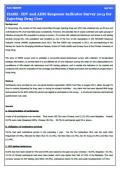
Resource | Fact Sheets,
In Hong Kong, the number of HIV cases transmitted through injecting drug use (IDU) has remained low up till now and contributed to 5% of all reported cases cumulatively. However, the potential risk of cluster outbreak and rapid upsurge of infection among the IDU population is always a concern. To monitor HIV-related risk behaviours and access to HIV testing services among IDU, this population was included as one of the four at-risk populations in the HIV/AIDS Response Indicator Survey (HARiS) implemented since 2013. The first HARiS was conducted in 2013, via commissioning to the Stanley Ho Centre for Emerging Infectious Disease, School of Public Health and Primary Care of the Chinese University of Hong Kong.
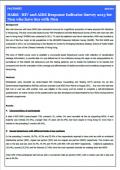
Resource | Fact Sheets,
Men who have sex with men (MSM) has continued to account for a significant proportion of newly acquired HIV infections in Hong Kong. The last community based survey "HIV Prevalence and Risk Behavioural Survey of Men who have sex with men in Hong Kong" (PRiSM) was conducted in 2011. To track the epidemic and inform intervention, MSM was included as the one of the four major at-risk populations in the HIV/AIDS Response Indicator Survey (HARiS). The first HARiS was conducted in 2013, via commissioning to the Stanley Ho Centre for Emerging Infectious Disease, School of Public Health and Primary Care of the Chinese University of Hong Kong.
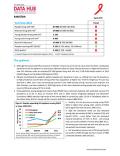
Resource | Fact Sheets,
Pakistan has followed the epidemic pattern typically seen elsewhere in Asia, i.e., shifting from low HIV prevalence to high prevalence concentrated among certain key populations at higher risk. The first indigenous HV case was detected in 1987, more cases started being reported in the 1990s (mostly among returning work migrants and their families), and then suddenly in 2003 high levels of HIV were detected among people who inject drugs in Karachi (23%) and Larkana (9.7%) in Sindh.





